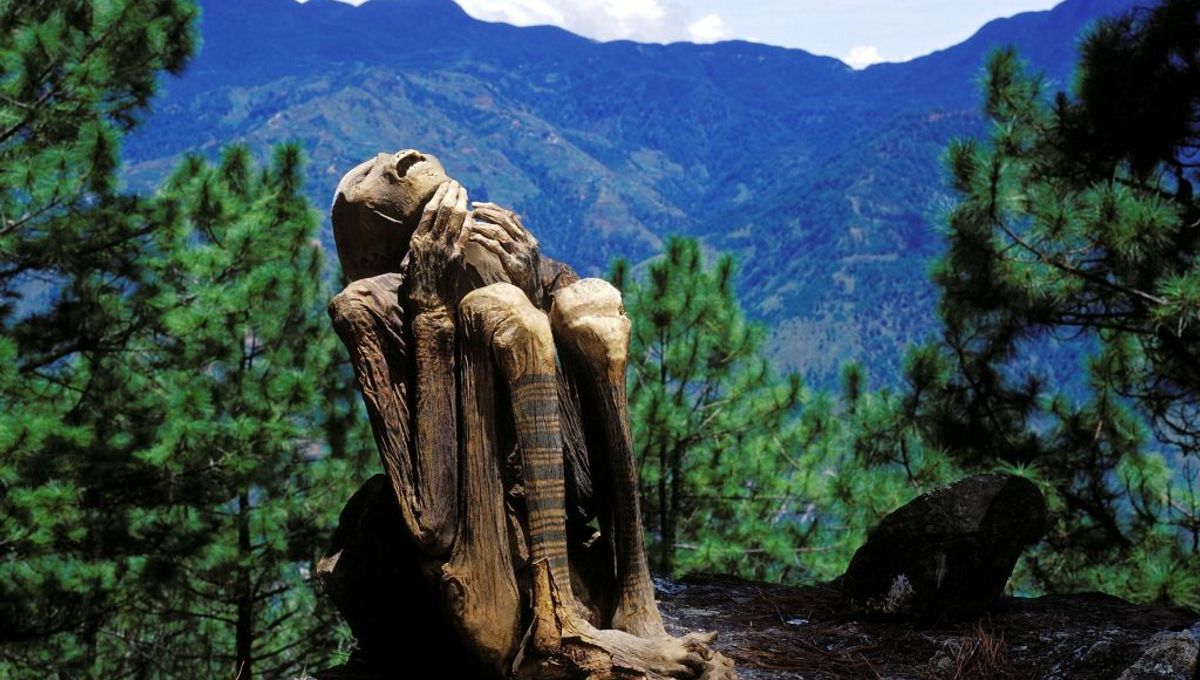
Dotted throughout the mountainous Kabayan municipality in the Philippines, dozens of secretly concealed “fire mummies” have lain undisturbed for hundreds of years. Known by locals as meking, these well-preserved corpses belong to the ancient ancestors of the Indigenous Ibaloi, yet environmental changes now threaten to destroy these revered remains.
The popular term “fire mummy” derives from the process by which these bodies were preserved. Though the exact mummification method has never been written down and is now largely forgotten, it’s believed that the meking were smoked over long periods, resulting in an excellent state of preservation.
The mummified bodies were then placed in caves atop the highest mountains in the Benguet region. At altitudes of almost 3,000 meters (9,840 feet), the cold mountain conditions helped to protect the bodies from degradation and decay, although climate change, leaks, and human interference have seen some of these mummies become infested with mold and insects.
In an attempt to preserve the meking, researchers from the University of Melbourne have installed environmental monitors in some of the caves that house these ancient mummies. This will allow scientists to track changes in moisture and temperature before deciding on the best course of action to protect the mummies.
And while the team is hopeful of safeguarding the fire mummies’ future, other researchers are still trying to piece together the history of these macabre relics. Because the secrets of the Kabayan mummification process have only been passed down by word of mouth, the discontinuation of the tradition means that many of the details have now been lost.
For instance, no one knows exactly how many mummies exist or where their caves are located. It’s also unclear how and when the tradition started, although local legend suggests that the first person to become a fire mummy was a 12th-century ruler and demigod named Apu Anno.
Like many other fire mummies, Apu Anno’s body was so immaculately preserved that the tattoos covering his body are still visible. Stolen from its resting place in 1918, the legendary leader’s mummy was later paraded as a carnival attraction in Manila before winding up in an antique shop, only to be finally returned to the Ibaloi in 1999.
Sadly, Apu Anno’s mummified body is currently invaded with fungal spores and now lies in a cave that cannot be accessed by the public while scientists attempt to preserve the corpse.
So far, researchers have not accurately dated the remains of Apu Anno, although radiocarbon dating of other fire mummies has indicated that some are between 150 and 200 years old. This suggests that Kabayan mummification was practiced all the way up to the 19th century.
The procedure itself is also largely unknown, although it’s believed that bodies were strapped to a contraption called a “death chair” while they were cleansed with salt water and dried with the smoke of burning herbs. No one knows for sure which plants were used, although interviews with local Indigenous elders have indicated that many of the ingredients – including a native plant called Embelia philippinensis – were specifically chosen for their antimicrobial properties.
According to local beliefs, the meking were placed atop mountains so they could be closer to the gods. Unless their destruction is averted, some believe that disaster will befall present and future generations of the Ibaloi.
Source Link: Ancient "Fire Mummies" Residing On Philippine Mountaintops Are At Risk Of Destruction